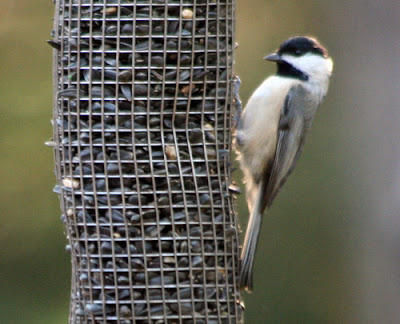This week in birds - #179
A roundup of the week's news of birds and the environment:
*~*~*~*
Global temperatures are running far above last year’s record-setting level, all but guaranteeing that 2015 will be the hottest year in the historical record — and undermining political claims that global warming isn't happening or has somehow stopped. The National Oceanic and Atmospheric Administration, which tracks worldwide temperatures, said on Wednesday that last month was the hottest September on record, and that it had taken the biggest leap above the previous September that any month has displayed since 1880, when tracking began at a global scale. The agency also announced that the January-to-September period had been the hottest such span on the books.
A new analysis of fire activity in Alaska's Yukon Flats finds that so many forest fires are occurring there that the area has become a net exporter of carbon to the atmosphere. In other words, more carbon is being produced than can be absorbed by the remaining trees. This is worrisome, the researchers say, because arctic and subarctic boreal forests like those of the Yukon Flats contain roughly one-third of the Earth's terrestrial carbon stores.
*~*~*~*
Global temperatures are running far above last year’s record-setting level, all but guaranteeing that 2015 will be the hottest year in the historical record — and undermining political claims that global warming isn't happening or has somehow stopped. The National Oceanic and Atmospheric Administration, which tracks worldwide temperatures, said on Wednesday that last month was the hottest September on record, and that it had taken the biggest leap above the previous September that any month has displayed since 1880, when tracking began at a global scale. The agency also announced that the January-to-September period had been the hottest such span on the books.
*~*~*~*
How will birds adapt to climate change? Can they adapt? Observations by European birdwatchers are offering some possible answers to those questions.
*~*~*~*
The Galapagos Islands are still yielding up secrets nearly two hundred years after Charles Darwin's visit there. Now a new species of giant tortoise has been discovered on Santa Cruz Island.
*~*~*~*
Landfills serve as fast food restaurants for young Bald Eagles just learning to make their way in the world, but, as their hunting skills become more proficient, they visit the landfills less often.
*~*~*~*
New York City has had a project going to add one million trees to the cityscape. With the planting of a lacebark elm in Joyce Kilmer Park in the Bronx this week, they reached that goal - one million new trees planted.
*~*~*~*
Bird migration can involve a complex set of strategies for the migrant to reach its destination. Research has established that birds with longer migration routes also take longer stopovers along the way for feeding and resting.
*~*~*~*
Bugblog has a feature about a very interesting family, the jumping spiders. They may look malevolent, but, in fact, for the most part, they are harmless and are our allies in the environment. They often dine on the bugs that we would rather not have around.
*~*~*~*
In the 14th century, an epidemic of plague known as the Black Death killed up to one-third of the population of Europe. Scientists have long searched for the origins, the earliest incidence, of this plague among humans. Recent research has found the oldest evidence thus far, which indicates that the plague was present at least five thousand years ago.
*~*~*~*
A recent shorebird fossil find in New Zealand lends more evidence for a family connection between New Zealand's and Australia's birds and those of South America.
*~*~*~*
Charismatic Minifauna has a feature on the beautiful Wood Thrush, a bird whose population has dropped by 55% since 1966 and which has been identified as a bird in danger of extinction. In order to help the bird survive, it is necessary to gather information about where they go and what they do. That is being done now using radio telemetry.
*~*~*~*
More research on bird migrations: Migratory birds make their trips faster, even when they involve longer distances, if they are able to maximize support from the prevailing winds.
*~*~*~*
*~*~*~*
Sometimes "facts" get reported and then repeated and repeated until they take on a life of their own and become "common knowledge," even though they never had any basis in truth. That can be true even in science as it is in our political life. Such is the case with some myths about the density of penguin feathers, but scientists are now taking pains to bust those myths.
*~*~*~*
Radio telemetry has helped to uncover the endangered European Roller's migration route between Africa and Europe.
*~*~*~*
Did you ever wonder how vultures are able to digest the decaying foods that make up their diet while guarding themselves against the pathogens that may be present in those carcasses? A new study published in Genome Biology offers some of the answers which involve the birds' unique genetic makeup.

It's scary to think that the plague has been around for that long.
ReplyDeleteIndeed and, of course, it still exists and causes problems in various parts of the world from time to time.
Delete